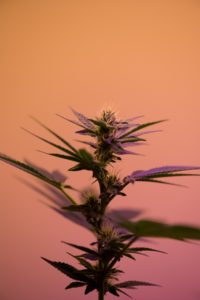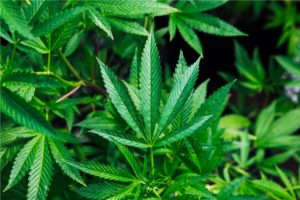Marijuana has become more culturally acceptable over the years and as a result, has become much more prevalent among young people. As a counselor, I often speak with teenagers who believe, “Marijuana isn’t bad because it’s organic.”
 Rather than try to control them by telling them to not use marijuana, I strive to help them acquire a fuller picture of marijuana so they can make a well-informed decision.
Rather than try to control them by telling them to not use marijuana, I strive to help them acquire a fuller picture of marijuana so they can make a well-informed decision.
Once, a young teen informed me that research has proven that “marijuana is safe for teens to use.” So I told him I would like to look at the articles, to which he confessed his proven research was hearsay from a friend.
I proceeded to show him a selection of research articles pointing out the risks marijuana poses to teens. Here, I would like to highlight some of the problems that the recreational use of marijuana can cause young people considering experimenting with the drug.
The National Institute on Drug Abuse at www.drugabuse.gov (NIDA, December 2017) has found that:
- “When asked, only about 1 in 14 teens say they used marijuana in the past month. So, if you were thinking everyone uses marijuana, they don’t.
- Some think marijuana is okay to use because it’s “natural…”
- Some teens believe marijuana can’t be that harmful if states are legalizing it…
- In 2016, around 4 million people ages 12 and older had a marijuana use disorder…”
Many believe that marijuana is not addictive. It is true that marijuana may not lead to chemical dependency, but it can lead to a psychological dependency. The state of addiction is when someone is unable to control their use of a substance and the use leads to negative consequences. Irvine Christian Counseling offers support to those struggling with substance dependency, helping them regain control and build healthier habits.
Working in a treatment center for chemical dependency gave me real life examples of drug addiction and substance abuse. Based on my experience, there is a qualitative difference between marijuana addicts and other drugs users.
To help illustrate the differences, let’s compare drug use to a flat tire. Cocaine addiction is like blowing out your tire going 90 mph downhill. The stakes are high and the consequences immediate.
Marijuana is different. Unlike the explosive cocaine addiction, marijuana manifests as a slow leak in your tire. Often a small leak is unnoticeable, but as time goes on, it becomes more and more difficult to drive. Eventually, the tread of the tire will wear down and serious damage will occur.
Psychological problems caused by marijuana may seem less destructive and dramatic, but the danger is still real. And this is why marijuana dependence in teens is detrimental. It seems harmless but leads to serious consequences.
 Adolescence is a formational time for teenagers. They are facing psychological turmoil and upheaval as they work out who they are. As a result, they face anxiety as they seek to fit in and define their values. Marijuana can help relax teens and give them an escape from their stress. It can seem like the solution to their problems.
Adolescence is a formational time for teenagers. They are facing psychological turmoil and upheaval as they work out who they are. As a result, they face anxiety as they seek to fit in and define their values. Marijuana can help relax teens and give them an escape from their stress. It can seem like the solution to their problems.
While marijuana is good at momentarily relieving anxiety, it cannot deliver a stress-free life. Anxiety and stress are necessary experiences as adolescents move into adulthood. Without facing these difficulties, healthy identity formation and coping skills are interrupted.
The pressures of life do not go away and teens who don’t know who they are or how to cope, need to smoke to escape from the pressure. Eventually, psychological dependence occurs. The teen no longer has a choice to smoke – they must in order to survive. The process leads to a dangerous and painful pattern of hiding and escapism from real life.
Even though marijuana dependency may seem less serious than with other drugs, I have noticed that the recovery is sometimes more difficult because of the long-term effect on anxiety. People who give up smoking later in life, after having smoked through their youth, face the pressures of adulthood with no real ability to cope.
For heavy users, extreme anxiety can persist for as long as a year after giving up the practice. I used to remind my patients for, “every year you smoked, is also a year of delayed maturity.” The teen years are critical for proper psychological growth. Chronic marijuana use hinders and delays development because it sidesteps healthy anxiety. Everyone needs stress to grow, if we don’t face stress, then we atrophy.
NIDA (2017) reports that roughly, “11 percent of people who use marijuana in a given year may have a drug problem. ” And those who begin using before the 18 are even more likely to develop drug-related issues.
In addition to potential dependency, marijuana use can also negatively affect teenager’s driving and school performance. Driving is made more dangerous by marijuana use. Teenagers are just learning to drive. During this time, they are already precarious behind the wheel and marijuana use only further inhibits their reaction time and ability to make safe decisions on the road.
It also negatively affects their school performance. THC is a fat soluble so the negative effects of marijuana can persist for days. The effects can lead to poor concentration and difficulty remembering.
Another known side effect of marijuana use is “amotivational syndrome.” This is where the user loses motivation to accomplish a goal. Since marijuana stifles anxiety, users do not experience healthy concern to grow and accomplish goals.
NIDA (2017) reports that “compared with teens who don’t use, students who use marijuana are more likely not to finish high school or get a college degree.” The same study also found that marijuana can affect a teen’s movement, timing, and coordination, thereby hampering athletic performance.
 While teens assume that marijuana is “organic, natural, and healthy” research shows otherwise. It shows that use in teens dramatically increases the chance of mental illness.
While teens assume that marijuana is “organic, natural, and healthy” research shows otherwise. It shows that use in teens dramatically increases the chance of mental illness.
Whether marijuana actually “unlocks” the potential for mental illness or is the direct cause of the mental illness isn’t clear. It is known is known that marijuana is a hallucinogen, thereby, altering the electrical activity of the brain, changing the perception experience by the user.
In my opinion, the effect of marijuana inadvertently leads to mental illness. Rather than the direct electrical activity, the suppression of anxiety is what results in the illness. Using marijuana doesn’t eliminate anxiety, it just avoids it. But, over time it builds up, sort of like a credit card. You might not be experiencing the anxiety, but it is still building up.
After a long enough time, the anxiety and stress pile up like unpaid bills and the drug can’t provide the relief it once did. At this point, teens can face a breakdown because the weight of the stress is too high. So even though marijuana promised relief, it could not deliver on its promise.
When the stress hits its peak and breakdown occurs, a predisposed teen can unlock his mental illness. Some mental illnesses, once activated by marijuana use, never go way, making marijuana use exceptionally dangerous for teens.
According to NIDA (2017): “Marijuana use is linked with a higher risk for schizophrenia, depression, and anxiety.” While the “link” is still being researched, the conditions are clearly connected to drug use. Further research on the drug shows the following results (NIDA 2017):
Short-term effects (while using or right after using):
- learning, attention, and memory problems
- distorted perception (sights, sounds, time, touch)
- poor coordination
- increased heart rate
- anxiety, paranoia
- psychosis (not common)
Effects that last longer than the short-term (a few days) but may not be permanent:
- learning and memory problems
- sleep problems
Long-term effects (effects of repeated use):
- risk of marijuana addiction
- long-term learning and memory problems if heavy use begins during youth
- the risk for a chronic cough, bronchitis
- risk of schizophrenia in some people with higher genetic risk
- in rare cases, the risk of recurrent episodes of severe nausea and vomiting”
 Is marijuana a “gateway drug” for teens? Will it lead to more dangerous drug use and substance abuse?
Is marijuana a “gateway drug” for teens? Will it lead to more dangerous drug use and substance abuse?
Most studies of which I am aware list alcohol, tobacco or marijuana as the prerequisites for other drug use and substance abuse. Most will try these and not continue on to harder drugs. But there is a percentage of teens who will use marijuana as a “gateway drug” to more dangerous substances.
According to NIDA (2017), a couple reasons why marijuana may lead to other, harder substances are:
- Someone who may go on to use other drugs may use marijuana first because it’s easier to get.
- Someone who is using marijuana is likely to be in contact with users and sellers of other drugs, increasing the chances of trying them.
If a teenager is unable to stop their use of marijuana, even when they want to, they may be struggling with a marijuana use disorder. When a teen’s tolerance grows, requiring more smoking to get the original or same effect, smoking more frequently to function, and continuing to use even though they are facing negative consequences, they are likely facing an addiction.
Treating a marijuana disorder often requires multiple elements at once. The recovering addict will need group treatment, psychological education on the topic of addiction, and individual therapy to teach healthy ways of coping with anxiety and stress. These are typical components of a treatment program and these treatments have been found effective, according to NIDA (2017).
At the end of the day, marijuana is not as harmless as it may first appear. Despite cultural assumptions of its “organic, healthy” effects, frequent use in teens can undermine their cognitive functioning and psychological development.
Adolescence is a pivotal time of change and self-discovery. During this time, teens need to have a fully functioning brain to process stress and emotions as they mature into adulthood. Escaping the stress may seem like a good option, but marijuana use only suppresses the anxiety of real life.
Eventually, these problems will resurface in adulthood. Unfortunately, the victim will not be prepared to handle the intensity of the stress and anxiety and could face very serious consequences.
If you think a teen you know may be experimenting with marijuana or dealing with substance abuse, intercepting the problem early can help. Don’t wait until the problem gets out of hand.
Schedule a counseling appointment for your teen now, so they can be properly educated about the dangers of marijuana use and substance abuse. Through guidance from Irvine Christian Counseling, they can develop healthy ways of coping with stress and anxiety, setting the foundation for a brighter future.
“Cannabis”, Courtesy of Robert Nelson, Unsplash.com, CC0 License; “Teen Smoker”, Courtesy of Ivandrei Pretorius, Pexels.com, CC0 License; “Marijuana”, Courtesy of Rick Proctor, Unsplash.com, CC0 License; “Shooting Up”, Courtesy of VanveenJF, Unsplash.com, CC0 License
-
Kate Motaung: Curator
Kate Motaung is the Senior Writer, Editor, and Content Manager for a multi-state company. She is the author of several books including Letters to Grief, 101 Prayers for Comfort in Difficult Times, and A Place to Land: A Story of Longing and Belonging...
DISCLAIMER: THIS ARTICLE DOES NOT PROVIDE MEDICAL ADVICE
Articles are intended for informational purposes only and do not constitute medical advice; the Content is not intended to be a substitute for professional medical advice, diagnosis, or treatment. All opinions expressed by authors and quoted sources are their own and do not necessarily reflect the opinions of the editors, publishers or editorial boards of Irvine Christian Counseling. This website does not recommend or endorse any specific tests, physicians, products, procedures, opinions, or other information that may be mentioned on the Site. Reliance on any information provided by this website is solely at your own risk.





